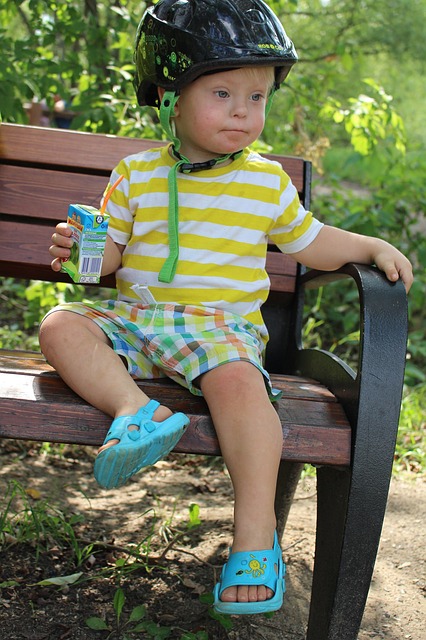Children with Down Syndrome often don’t speak or develop vocabulary at the same rate as other children. But new research shows that helping parents to interact with their child in particular ways can boost their language development. Professor Vesna Stojanovik, who is currently hosting the 2018 Down Syndrome Forum at Reading, explains more.
We know that children with Down Syndrome (DS) have difficulty acquiring language. We also know that language development is supported by other skills such as the child’s general cognitive development, their ability to extract words from the language they hear, and the way caregivers interact with the child.
Sharing a moment
Early social communication skills include eye contact, gestures and the ability to share points of interest with others, which we call ‘joint attention’. For example, a mother and child may be looking at a toy together at the same time. There are two types of joint attention – initiating and responding to joint attention.
Initiating joint attention involves using gestures and/or eye gaze to direct the attention of another person, e.g. if a child points out of the window to show their parent an aeroplane.
Responding to joint attention is following the eye gaze/gesture of another person. An example of this would be when a parent shows a toy to the child and invites them to look at it and the child looks at the toy.
Previous research from members of our team found the ability to respond to joint attention at 18-21 months significantly predicted language outcomes at 30-35 months in a group of infants with Down syndrome.
Based on this finding, we wanted to trial an intervention that targeted responding to joint attention at 18-21 months in children with DS to see if this would lead to better language skills at 30-35 months. A literature search uncovered an existing intervention designed to improve joint attention which had previously been used in children with Autism Spectrum Disorder, which we adapted it for our study.
Sixteen families from across the UK agreed to take part in the trial. After an initial assessment, children began a 10 week intervention programme that involved one clinic-led session plus parent-led ‘tasks’ at home.
Understanding more words
Although children’s language/vocabulary scores assessed at the end of the study period were not significantly different from those children in the control group, the number of words they could understand had significantly improved compared to controls at 30-35 months. In fact, children in the test group could understand more than double the number of words.
More than two-thirds of parents felt their child’s speech and language had improved as a result of the intervention and nine out of ten parents noticed improvements in other areas of development such as their child’s improved attention span.
We will soon be starting a randomised controlled trial with a larger number of children to understand more about how the intervention is affecting language development in children with Down syndrome.
This year’s Down Syndrome Research Forum, held here at the University of Reading from 17-18 September, will explore development of speech, language and communication in monolingual and bilingual children; interventions to promote speech, language and communication skills; face processing; the relationship between feeding practices and eating behaviours; and transition from primary to secondary school.
Professor Vesna Stojanovik is from Reading’s School of Clinical Language Sciences.

